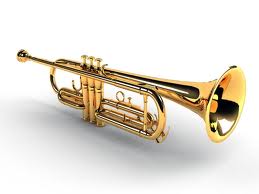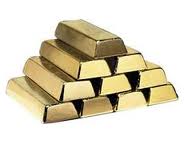Brass - (Cu+Zn)
Melting Point: 1652-1724 Fahrenheit \ 900-940 CelsiusBoiling Point: Fahrenheit \ Celsius
 Brass is a buttery yellow alloy of copper and zinc, in comparison, bronze is principally an alloy of copper and tin. The color of brass will also vary, depending on the amount of zinc: brass gets lighter in color with additional zinc, and can reach a pale yellow stage and can be used for decoration for its bright gold-like appearance.
Brass is a buttery yellow alloy of copper and zinc, in comparison, bronze is principally an alloy of copper and tin. The color of brass will also vary, depending on the amount of zinc: brass gets lighter in color with additional zinc, and can reach a pale yellow stage and can be used for decoration for its bright gold-like appearance.The uses of brass vary depending on the percentages of zinc and copper, and which other metals have been added to alloy to bring out specific properties, but they include cartridge cases for weapons, pipes, weatherstripping, decorative accents on homes, and household ornaments. The malleability and acoustic properties of brass have made it the metal of choice for brass musical instruments.
Brass has higher malleability than bronze or zinc. By varying the proportions of copper and zinc, the properties of the brass can be changed, allowing hard and soft brasses. Basic brass has approximately 67% copper and 33% zinc, making it stronger and more durable than copper, although not as strong as metals like steel. Alloys with even less zinc start to turn reddish in color, and are sometimes called red brass. Other metals are sometimes added to the alloy include lead to make brass more workable by machine, tin, arsenic, and antimony to resist corrosion, and iron to make the brass harder and easier to forge.
Numerous terms are used to talk about brass including “cartridge brass” and "Dutch brass," but in the United States, brass is assigned a number under the Unified Numbering System. All brass alloys are first designated by the letter C, for copper, followed by five digits that provide specific information about that alloy. If the number starts with one through seven, the brass can be machined or forged, while numbers starting eights and nines refer to brass which can only be worked through casting.
Commercial brass is usually lacquered to resist corrosion, as the metal is highly subject to corrosion. Brass is susceptible to stress corrosion cracking, especially from ammonia or substances containing or releasing ammonia. Caring for brass around the home should take this lacquer into account, as you do not want to accidentally remove it. Never use highly abrasive cleaners on brass, as they can scratch it. If you know a brass is lacquered, use a specialized brass polish in very small amounts to lay a thin layer of protection on the brass, and buff it out. For raw brass, clean with alcohol or a very mild abrasive before polishing and rubbing with olive oil to resist corrosion. Should brass become tarnished, use vinegar or ammonia to lift the tarnish, or use a mixture of lemon and salt to gently rub it out before polishing.
Material Standard Brass Alloys
Brass is a copper alloy in which zinc is the main alloying element, making it stronger and more durable than copper or bronze. It is also corrosion resistant and easy to manufacture.Alloys
260 - Formable
330 - Machinable and Formable
353 - Ultra Machinable
360 - Ultra Machinable
385 - Ultra Machinable
464 - Weldable Naval
485 - Machinable Naval
Brass types
● Admiralty brass contains 30% zinc, and 1% tin which inhibits dezincification in many environments.
● Aich's alloy typically contains 60.66% copper, 36.58% zinc, 1.02% tin, and 1.74% iron. Designed for use in marine service owing to its corrosion resistance, hardness and toughness. A characteristic application is to the protection of ships' bottoms, but more modern methods of cathodic protection have rendered its use less common. Its appearance resembles that of gold.
● Alpha brasses with less than 35% zinc, are malleable, can be worked cold, and are used in pressing, forging, or similar applications. They contain only one phase, with face-centered cubic crystal structure.
● Prince's metal or Prince Rupert's metal is a type of alpha brass containing 75% copper and 25% zinc. Due to its beautiful yellow color, it is used as an imitation of gold. The alloy was named after Prince Rupert of the Rhine.
● Alpha-beta brass (Muntz metal), also called duplex brass, is 35–45% zinc and is suited for hot working. It contains both α and β' phase; the β'-phase is body-centered cubic and is harder and stronger than α. Alpha-beta brasses are usually worked hot.
● Aluminium brass contains aluminium, which improves its corrosion resistance. It is used for seawater service and also in Euro coins (Nordic gold).
● Arsenical brass contains an addition of arsenic and frequently aluminium and is used for boiler fireboxes.
● Beta brasses, with 45–50% zinc content, can only be worked hot, and are harder, stronger, and suitable for casting.
● Cartridge brass is a 30% zinc brass with good cold working properties. Used for ammunition cases.
● Common brass, or rivet brass, is a 37% zinc brass, cheap and standard for cold working.
● DZR brass is dezincification resistant brass with a small percentage of arsenic.
● Gilding metal is the softest type of brass commonly available. An alloy of 95% copper and 5% zinc, gilding metal is typically used for ammunition "jackets", e.g. full metal jacket bullets.
● High brass contains 65% copper and 35% zinc, has a high tensile strength and is used for springs, screws, and rivets.
● Leaded brass is an alpha-beta brass with an addition of lead. It has excellent machinability.
● Lead-free brass as defined by California Assembly Bill AB 1953 contains "not more than 0.25 percent lead content".
● Low brass is a copper-zinc alloy containing 20% zinc with a light golden color and excellent ductility; it is used for flexible metal hoses and metal bellows.
● Manganese brass is a brass most notably used in making golden dollar coins in the United States. It contains roughly 70% copper, 29% zinc, and 1.3% manganese.
● Muntz metal is about 60% copper, 40% zinc and a trace of iron, used as a lining on boats.
● Naval brass, similar to admiralty brass, is 40% zinc and 1% tin.
● Nickel brass is composed of 70% copper, 24.5% zinc and 5.5% nickel used to make pound coins in the pound sterling currency.
● Nordic gold, used in 10, 20 and 50 cts euro coins, contains 89% copper, 5% aluminium, 5% zinc, and 1% tin.
● Red brass is both an American term for the copper-zinc-tin alloy known as gunmetal, and an alloy which is considered both a brass and a bronze. It typically contains 85% copper, 5% tin, 5% lead, and 5% zinc. Red brass is also an alternative name for copper alloy C23000, which is composed of 14–16% zinc, 0.05% iron and lead, and the remainder copper. It may also refer to ounce metal, another copper-zinc-tin alloy.
● Rich low brass (Tombac) is 15% zinc. It is often used in jewelry applications.
● Tonval brass (also called CW617N or CZ122 or OT58) is a copper-lead-zinc alloy. It is not recommended for seawater use, being susceptible to dezincification.
● White brass contains more than 50% zinc and is too brittle for general use. The term may also refer to certain types of nickel silver alloys as well as Cu-Zn-Sn alloys with high proportions (typically 40%+) of tin and/or zinc, as well as predominantly zinc casting alloys with copper additive.
● Yellow brass is an American term for 33% zinc brass.
HEALTH EFFECTS:
Lead Content: To enhance the machinability of brass, lead is often added in concentrations of around 2%. Since lead has a lower melting point than the other constituents of the brass, it tends to migrate towards the grain boundaries in the form of globules as it cools from casting. The pattern the globules form on the surface of the brass increases the available lead surface area which in turn affects the degree of leaching. In addition, cutting operations can smear the lead globules over the surface. These effects can lead to significant lead leaching from brasses of comparatively low lead content.
Also in California, lead-free materials must be used for "each component that comes into contact with the wetted surface of pipes and pipe fittings, plumbing fittings and fixtures." On January 1, 2010, the maximum amount of lead in "lead-free brass" in California was reduced from 4% to 0.25% lead. The common practice of using pipes for electrical grounding is discouraged, as it accelerates lead corrosion.
Opposite of some leaded brass concerns is that the copper in brass makes brass germicidal. Depending upon the type and concentration of pathogens and the medium they are in, brass kills these microorganisms within a few minutes to eight hours of contact.
About Metal Spot Prices: The spot price of metals is based on paper contracts for delivery of tons of pure metal ingots. When you're not prepared to pay for and take delivery of tons of metal ingots, that spot price will quickly become a
 huge
understatement
of the
real price
of that
metal.
When you
want to
buy just a
few pounds
of Brass
for
example,
you're
looking at
substantially
higher
prices.
Moreover,
once you
own
physical
Brass
ingots,
make
absolutely
sure you
never sell
for the
spot price
of Brass.
Because
it's hard
to get
ingot
grade
Brass in
physical
form,
you've got
something
special on
your hands
and make
sure to
extract
the full
value when
you're
selling
and
understand
the
reverse
when
buying.
huge
understatement
of the
real price
of that
metal.
When you
want to
buy just a
few pounds
of Brass
for
example,
you're
looking at
substantially
higher
prices.
Moreover,
once you
own
physical
Brass
ingots,
make
absolutely
sure you
never sell
for the
spot price
of Brass.
Because
it's hard
to get
ingot
grade
Brass in
physical
form,
you've got
something
special on
your hands
and make
sure to
extract
the full
value when
you're
selling
and
understand
the
reverse
when
buying.Brass raw ingot source selection and prices vary greatly. In small user quantities expect to pay 14.00 to 18.00 a pound.